 August 22, 2019 John E. Ross, KD8IDJ, Editor
| ||||||
Candidates for ARRL Directors and Vice Directors Announced Two races for the office of ARRL Director and one contest for Vice Director are set for this fall. In the Southeastern Division, incumbent Director Greg Sarratt, W4OZK, faces a challenge from Mickey Baker, In the West Gulf Division, incumbent John Stratton, N5AUS, faces a challenge from Madison Jones, W5MJ. Seats for Director and Vice Director in three other ARRL Divisions are unchallenged, with incumbents running for election in all but one case: In the Southwestern Division, Mark Weiss, K6FG, is running unopposed for the seat being vacated by Ned Stearns, AA7A. All candidates having no opposition have been declared elected. The candidates are: Pacific Division Director Jim Tiemstra, K6JAT Vice Director Kristen McIntyre, K6WX Rocky Mountain Division Director Jeff Ryan, K0RM Vice Director Robert Wareham, N0ESQ
Director Greg Sarratt, W4OZK Mickey Baker, N4MB Vice Director James Schilling, KG4JSZ Jeff Stahl, K4BH Joseph Tiritilli, N4ZUW Southwestern Division Director Richard Norton, N6AA Vice Director Mark Weiss, K6FG West Gulf Division Director John R. Stratton, N5AUS Madison Jones, W5MJ Vice Director Lee Cooper, W5LHC In Divisions where more than one candidate is seeking the same position, full members in that Division in good standing as of September 10, 2019, will have the opportunity to cast ballots. Official paper ballots and candidates' statements will be mailed no later than October 1, 2019, to members who are eligible to vote. Completed ballots must be received at the address on the envelope provided by noon Eastern Time on Friday, November 15, 2019, when ballots will be counted at ARRL Headquarters and successful candidates announced. FCC Dismisses ARRL, AMSAT Requests in Small Satellite Proceeding An FCC Report and Order (R&O) released August 2 in the so-called "small satellite" rulemaking proceeding, IB Docket 18-86, failed to address concerns expressed by ARRL and AMSAT. Both organizations filed comments on the FCC Notice of Proposed Rulemaking (NPRM) in the proceeding last year, seeking changes in the FCCs interpretations and procedures affecting satellites operating on Amateur Satellite Service frequencies. "These comments address topics outside the scope of this proceeding, and we decline to adopt any of the requested rule modifications or updates at this time," the FCC said in the R&O. The FCC did mention amateur satellites in its 2018 NPRM, explaining what they are and describing the documentation and authorization process, but it did not solicit comments.
In its 2018 NPRM, the FCC had said, "Because the type of operations that qualify as amateur [is] narrowly defined, an amateur satellite authorization will not be appropriate for many small satellite operations." In its 2018 comments, ARRL said it wanted the FCC to preclude exploitation of amateur spectrum by commercial small-satellite users authorized under Part 5 Experimental rules and suggested that the FCC adopt a "a bright line test" to define and distinguish satellites that should be permitted to operate under Amateur Satellite rules. ARRL's position was to support and encourage college and university Amateur Radio experiments where the sponsor of the experiment is a licensed radio amateur and all operation in amateur spectrum is compliant with Part 97. Part 5 Experimental authorizations for satellites intended to operate in amateur allocations by non-amateur sponsors should be discouraged, absent a compelling show of need, ARRL told the FCC. AMSAT's comments reflected many of the same concerns that ARRL had expressed. Read more. -- Thanks to Ray Soifer, W2RS, for his assistance. Ending the Great Radio Silence after "The Great War" Practical wireless was still in its infancy at the turn of the 20th century and unregulated experimentation rampant. Chaos reigned on the airwaves. Given the When the US in 1917 joined the European conflict that became World War I, the federal government ordered hams to disassemble their stations, lower their antennas, and not use transmitters or receivers. Many hams who joined the military took their own radio gear along, because, as Brogdon explains, "the military didn't have enough radio equipment." The end of the war did not mean the resumption of Amateur Radio. Hams were allowed to use their receivers again but not transmit. The Navy was still in charge of all US radio communications, and another bill introduced in Congress proposed handing over ongoing control of all radio to the Navy.
Publication of QST also ceased during the war, and many hams had let their ARRL memberships lapse for the duration. ARRL officers and key members dug into their own wallets to thwart the bill, mailing a "Little Blue Card" to members urging them to ask their congressional representatives to oppose the Navy proposal. ARRL President Hiram Percy Maxim went to Washington to speak against the bill, which died in committee. It was not until 1919 -- amid another Navy effort to gain control over radio that was stalled by opposition from hams and others -- that the transmitting ban was lifted by an act of Congress. As Brogdon explains, "Maxim went to Washington again and found a sympathetic ear in Massachusetts Congressman William Greene, who ultimately introduced the successful House Joint Resolution 217, which asked the Navy 'to remove the restrictions on the use and operation of Amateur Radio stations throughout the United States.'" Hams were back on the air by the fall of 1919 -- 100 years ago! So Now What? Podcast "Contesting," with ARRL Contest Program Manager, Paul Bourque, N1SFE, will be the focus of the new (August 22) episode of the So Now What? podcast for Amateur Radio newcomers.
So Now What? is sponsored by LDG Electronics, a family owned and operated business with laboratories in southern Maryland that offers a wide array of antenna tuners and other Amateur Radio products. ARRL Communications Content Producer Michelle Patnode, W3MVP, and ARRL Station Manager Joe Carcia, NJ1Q, co-host the podcast. Presented as a lively conversation, with Patnode representing newer hams and Carcia the veteran operators, the podcast will explore questions that newer hams may have and the issues that keep participants from staying active in the hobby. Some episodes will feature guests to answer questions on specific topic areas. Listeners can find So Now What? on Apple iTunes, Blubrry, Stitcher (free registration required, or browse the site as a guest) and through the free Stitcher app for iOS, Kindle, or Android devices. Episodes will be archived on the ARRL website. WWV Centennial Committee to Conduct Trial Run of WW0WWV Special Event The WWV Centennial Committee will conduct a trial run of special event station WW0WWV over the August 24 - 25 weekend in advance of the event a little more than a month away. WW0WWV will be set up adjacent to the WWV transmitter site in Fort "We'll be testing band and notch filtering, in an attempt to reign in the extreme RF environment created by WWV and WWVB," said Dave Swartz, W0DAS, of the Northern Colorado Amateur Radio Club (NCARC). The special event is being organized in conjunction with the WWV Amateur Radio Club and the National Institute of Standards and Technology (NIST), which operates WWV/WWVH/WWVB. The special event site is within 1/3 of a mile of all six WWV transmitters and the 50 kW WWVB transmitter. "On-air tests will start Saturday afternoon, August 24, and run through Sunday, August 25," Swartz said.
The WWV Centennial special event is set to run from September 28 through October 2, and round-the-clock operation will take place on CW, SSB, and digital modes. Operations will shift among HF bands following typical propagation and will include 160 meters as well as satellites (SO-50, AO-91, and AO-92) and 6-meter meteor scatter. Up to four stations will be on the air for routine operations. A fifth station will schedule contacts with schools, universities, and museums, as well as conducting unscheduled contacts. The additional station will periodically broadcast an AM carrier from a radio locked with WWV's 10 MHz signal. Members of the Amateur Radio industry have contributed equipment, including radios, amplifiers, and antennas. Visit the WWV Centennial Committee website to see how you can contribute or get involved. Read more. The K7RA Solar Update Tad Cook, K7RA, Seattle, reports: Spotless days continue this week, with the count of consecutive days without sunspots standing at 15 days as of August 21, according to Spaceweather.com. Note that 1954 had more spotless days than 2018, and it was just prior to Cycle 19, the biggest in recorded history. Average daily solar flux was virtually unchanged -- from 67.4 last week to 67.5 this week. Average daily planetary A index edged lower, from 6.3 to 4.4. Predicted solar flux looks to remain steady: 67 on August 22 - September 11; 68 on September 12 - 21, and 67 on September 22 - October 5.
Sunspot numbers for August 15 - 21 were 0, 0, 0, 0, 0, 0, and 0, with a mean of 0. The 10.7-centimeter flux was 67.6, 67.5, 68, 67.5, 67.7, 67.3, and 66.8, with a mean of 67.5. Estimated planetary A indices were 4, 5, 4, 6, 4, 4, and 4, with a mean of 4.4. Middle latitude A index was 4, 6, 6, 7, 4, 7, and 5, with a mean of 5.6. A comprehensive K7RA Solar Update is posted Fridays on the ARRL website. For more information concerning radio propagation, visit the ARRL Technical Information Service, read "What the Numbers Mean...," and check out K9LA's Propagation Page. A propagation bulletin archive is available. Monthly charts offer propagation projections between the US and a dozen DX locations. Share your reports and observations. Just Ahead in Radiosport
See the ARRL Contest Calendar for more information. For in-depth reporting on Amateur Radio contesting, subscribe to The ARRL Contest Update via your ARRL member profile email preferences. ARRL Contest and DXCC Rules Now Prohibit Automated Contacts ARRL has incorporated changes to the rules for all ARRL-sponsored contests and DXCC, prohibiting automated contacts and requiring that an actual operator is initiating and carrying out a contact. These changes also apply to Worked All States (including Triple Play and 5-Band WAS), Fred Fish W5FF Memorial, and VUCC awards. The A resolution at the July ARRL Board of Directors meeting pointed to "growing concern over fully automated contacts being made and claimed" for contest and for DXCC credit. The rules now require that each claimed contact include contemporaneous direct initiation by the operator on both sides of the contact. Initiation of a contact may either be local or remote. Radio Amateurs in India Support Rescue and Relief Operations in the Face of Flooding Radio amateurs in at least three western Indian states along the coast of the Arabian Sea are pitching in to support communication for rescue and relief operations following heavy rainfall and flooding. In Kerala, Shyam Kumar, VU2JLE, told The Hindu newspaper that he and 15 other radio amateurs belonging to the Wayanad Hams (WHAMS) group have been closely monitoring to help the government rescue and relief teams get to marooned localities. News accounts say In Maharashtra, Amateur Radio and drones have been supplementing relief and rescue teams dealing with heavy flooding there. Rescue teams were reported to be using ham radio to pass information into a network. Some hams have come in from outside the region to assist. Members of the National Disaster Response Force (NDRF) and the military have been transporting supplies to some 5,000 people stranded in various locations. In the northern part of Karnataka state, radio amateurs from the Indian Institute of Hams (IIH) in Bengaluru (Bangalore) and a ham radio club consisting of postal department workers were reported to have helped rescue and relief operations on August 12. IIH Director Shankar Sathyapal, VU2FI, said three radio-equipped vehicles fanned out across the region. "This is the second line of communication," Sathyapal explained for a report in The Hindu. "Relief officers will be provided with walkie-talkies, while each vehicle can cover about a radius of around 10 - 15 kilometers, depending on the topography." -- Thanks to Southgate Amateur Radio News and media reports 2-Meter Sharing Proposal is on CEPT Conference Preparatory Group Agenda The final European Conference of Postal and Telecommunications Administrations (CEPT) Conference Preparatory Group (CPG) meeting prior to World Radiocommunication Conference 2019 (WRC-19) gets under way on August 26. Action at that gathering will determine whether a French proposal to have WRC-23 study the sharing of 144 - 146 MHz with the Aeronautical Mobile Service (AMS) will be adopted as a CEPT IARU has asked its member-societies to explain the Amateur Service's concerns over the French proposal to their telecommunications regulators, and it has submitted a basic technical analysis showing the impracticality of such a proposal. IARU has said much more appropriate parts of the spectrum are available to study for non-safety AMS applications. Another issue addressed during the June CEPT meeting concerned the sharing of the Amateur Radio 1240 - 1300 MHz band with Europe's Galileo GPS system. IARU has asked its member-societies to discuss with regulators the best way to resolve concerns regarding a few cases of Amateur Radio interference to the Galileo navigation system specific to its E6 subband at 1260 - 1300 MHz. Documents for the CEPT Conference Preparatory Group meeting are available via the CEPT website. Read more. Questions Raised About Current Process for Awarding the E.T. Krenkel Medal Questions about how the E.T. Krenkel Medal is being awarded, including whether recipients have to pay a fee to get the medal, have been brought to ARRL's attention. In the past, several prominent radio amateurs and organizations -- including QST -- have been awarded and received the medal without any advance notice and without having to provide any information or payment.
A small tourism enterprise, LLC Russian Traveler, was reportedly liquidated in January but is believed to be operated by a Russian radio amateur. A form attached to the Regulations that's designed for an organization or individual to nominate an honoree is the one now being sent to individuals who have been told they were nominated. ARRL takes no official position regarding the current status of E.T Krenkel Medal nominations, LLC Russian Traveler, or anyone connected with either. ARRL does, however, want to ensure that members are aware of the issues that have been called to its attention. In Brief...
A close friend of a radio amateur who died in a recent tower-related accident has contacted ARRL with additional observations. Joseph Areyzaga, K1JGA (photo), died in the July 27 incident, and the tower's owner was seriously injured. The individual reported that Areyzaga and Mike Rancourt, K1EEE -- the tower's owner -- were in the process of lowering one of the antennas when the tower tipped over. The friend said the tower was genuine Rohn 25, with a genuine Rohn BPH25 hinge plate, and that the apparent -- but not proven -- failure point was not obvious while the tower was still standing. All three pier posts on the hinge plate broke off, with the tower section bolts still intact and in place, he reported. No official determination has been made as to the specific cause of the failure. Rancourt, who was seriously injured in the incident, remains hospitalized but is said to be recovering well.
Upcoming ARRL Section, State, and Division Conventions
Find conventions and hamfests in your area.
. .
Subscribe to...
Free of charge to ARRL members...
| ||||||
 N4MB. A three-way race is set for the office of Southeastern Division Vice Director, with incumbent Joseph Tiritilli, N4ZUW, facing James Schilling, KG4JSZ, and Jeff Stahl, K4BH.
N4MB. A three-way race is set for the office of Southeastern Division Vice Director, with incumbent Joseph Tiritilli, N4ZUW, facing James Schilling, KG4JSZ, and Jeff Stahl, K4BH.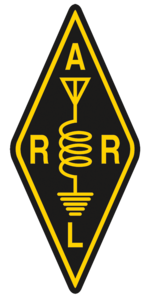 Southeastern Division
Southeastern Division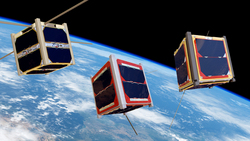 "The Commission did not seek comment in the NPRM on any modifications or updates to the rules governing Experimental or amateur satellite licensing. The streamlined Part 25 small satellite process adopted in the Order is an alternative to existing license processes and does not replace or modify the authorization procedures for satellites currently contained in Parts 5, 25, or 97 of the Commission's rules," the FCC explained. "Nevertheless, we received a number of comments in response to the NPRM, particularly regarding the rules applicable to amateur satellite operations, suggesting that aspects of those rules be improved or clarified."
"The Commission did not seek comment in the NPRM on any modifications or updates to the rules governing Experimental or amateur satellite licensing. The streamlined Part 25 small satellite process adopted in the Order is an alternative to existing license processes and does not replace or modify the authorization procedures for satellites currently contained in Parts 5, 25, or 97 of the Commission's rules," the FCC explained. "Nevertheless, we received a number of comments in response to the NPRM, particularly regarding the rules applicable to amateur satellite operations, suggesting that aspects of those rules be improved or clarified."-sm.jpg) technology of the day -- spark gap transmitters that emitted very, very broad signals -- interference was a problem. As Al Brogdon, W1AB, explains in "The World War I Shutdown," in the September 2019 issue of QST (p. 70), hams, passenger ships, and the US Navy were the main users of wireless, and the Navy went to Congress in an unsuccessful effort to wrest control over radio and, effectively, abolish ham radio in the US. Radio amateurs opposing the bill had an ally in the Marconi Company.
technology of the day -- spark gap transmitters that emitted very, very broad signals -- interference was a problem. As Al Brogdon, W1AB, explains in "The World War I Shutdown," in the September 2019 issue of QST (p. 70), hams, passenger ships, and the US Navy were the main users of wireless, and the Navy went to Congress in an unsuccessful effort to wrest control over radio and, effectively, abolish ham radio in the US. Radio amateurs opposing the bill had an ally in the Marconi Company.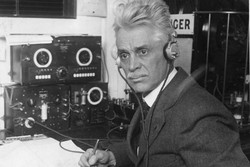
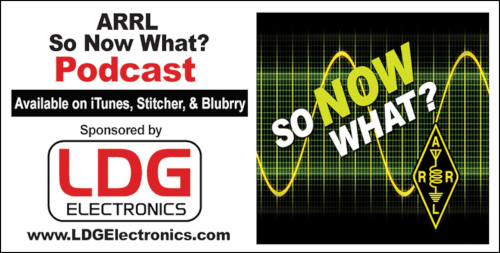 If you're a newly licensed Amateur Radio operator, chances are you have lots of questions. This biweekly podcast has answers! So Now What? offers insights from those who've been just where you are now. New episodes will be posted every other Thursday, alternating new-episode weeks with the
If you're a newly licensed Amateur Radio operator, chances are you have lots of questions. This biweekly podcast has answers! So Now What? offers insights from those who've been just where you are now. New episodes will be posted every other Thursday, alternating new-episode weeks with the 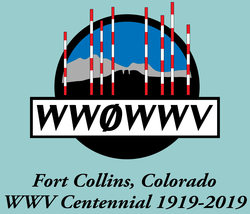 Collins, Colorado. WWV
Collins, Colorado. WWV .jpg)
 The planetary A index forecast: 5 on August 22 - 26; 8 on August 27 - 28 and 5 on August 29 - 31. Then, with a recurring coronal hole, 38 and 14 on September 1 - 2; 5 on September 3 - 5; 8 on September 6 - 7; 5 on September 8 - 15; 7 on September 16 - 17; 6 on September 18; 5 on September 19 - 21; 8 on September 22 - 24 and 5 on September 25 - 27. With the return of that coronal hole, 38 and 14 on September 28 - 29; 5 on September 30 - October 2; 8 on October 3 - 4, and 5 on October 5.
The planetary A index forecast: 5 on August 22 - 26; 8 on August 27 - 28 and 5 on August 29 - 31. Then, with a recurring coronal hole, 38 and 14 on September 1 - 2; 5 on September 3 - 5; 8 on September 6 - 7; 5 on September 8 - 15; 7 on September 16 - 17; 6 on September 18; 5 on September 19 - 21; 8 on September 22 - 24 and 5 on September 25 - 27. With the return of that coronal hole, 38 and 14 on September 28 - 29; 5 on September 30 - October 2; 8 on October 3 - 4, and 5 on October 5.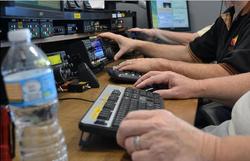 changes are effective immediately and affect the rules for both HF contests, and VHF/UHF contests as well as DXCC.
changes are effective immediately and affect the rules for both HF contests, and VHF/UHF contests as well as DXCC.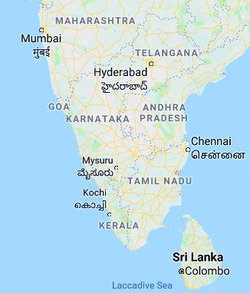 more heavy rain is expected in many parts of India, bringing with it the threat of flooding. Monsoon rains have been falling for weeks, and more than 270 people have died, about half of them in Kerala.
more heavy rain is expected in many parts of India, bringing with it the threat of flooding. Monsoon rains have been falling for weeks, and more than 270 people have died, about half of them in Kerala.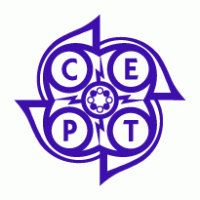 WRC-19 position. International Amateur Radio Union (
WRC-19 position. International Amateur Radio Union ( ARRL has been advised that in recent months "nominees" have been invited essentially to complete their own nomination forms and asked to forward a fee for the cost of obtaining the medal, which some nominees said they have not received. Regulations for the E.T. Krenkel Medal, issued by "LLC Russian Traveler and National Academy of Researches and Discoveries," states that the cost of a medal is to be paid by the sponsor (individual or organization) nominating a medal recipient. Some evidence suggests that sponsor and recipient may now be one and the same.
ARRL has been advised that in recent months "nominees" have been invited essentially to complete their own nomination forms and asked to forward a fee for the cost of obtaining the medal, which some nominees said they have not received. Regulations for the E.T. Krenkel Medal, issued by "LLC Russian Traveler and National Academy of Researches and Discoveries," states that the cost of a medal is to be paid by the sponsor (individual or organization) nominating a medal recipient. Some evidence suggests that sponsor and recipient may now be one and the same. Reminder: The
Reminder: The  A message on WWV is prompting listeners to take a survey about the service. Through Saturday, August 24, WWV and WWVH will transmit a US Department of Defense (DOD) message in conjunction with the COMEX 19-3 interoperability exercise in Tennessee. The broadcast also urges listeners to
A message on WWV is prompting listeners to take a survey about the service. Through Saturday, August 24, WWV and WWVH will transmit a US Department of Defense (DOD) message in conjunction with the COMEX 19-3 interoperability exercise in Tennessee. The broadcast also urges listeners to 
.jpg) Ulrich L. Rohde, N1UL, has been named as an Honorary Fellow of India's Institution of Electronics and Telecommunication Engineers (
Ulrich L. Rohde, N1UL, has been named as an Honorary Fellow of India's Institution of Electronics and Telecommunication Engineers (







